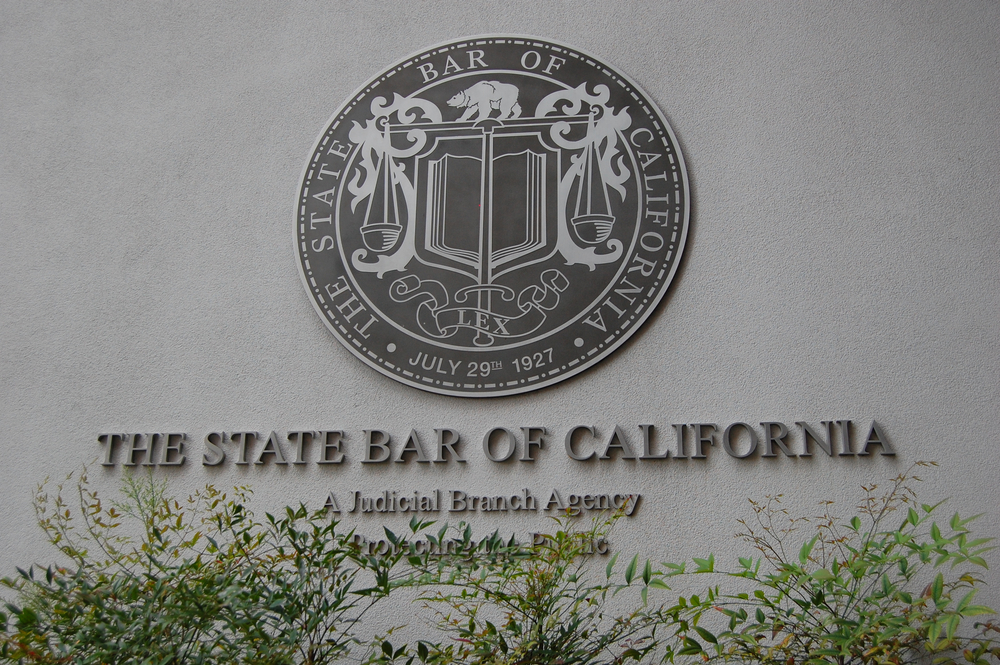California releases bar exam results, and like many jurisdictions sees increase in pass rates

Image from Shutterstock.com.
Out of the 9,301 people who sat for California’s online bar exam in October, the pass rate was 60.7%, according to a Jan. 8 news release from the State Bar of California.
Comparatively, the pre-pandemic in-person July 2019 California bar had 7,764 people complete it, and the pass rate was 50.1%.
Because of COVID-19, California was one of 20 jurisdictions to replace the traditional in-person July bar exam with an October online test designed by the National Conference of Bar Examiners.
“We are pleased that the first-ever remote bar exam will result in such a large influx of new attorneys at a time when more people than ever need legal help. We hope to welcome all those who passed to California’s legal profession very soon,” Donna Hershkowitz, interim executive director of the California bar, said in the bar’s news release.
In July, the California Supreme Court lowered the bar exam cut score from 1440 to 1390. On Friday, the bar’s executive committee recommended that the court admit people who failed bar exams between July 2015 and February 2020, with scores of at least 1390, the Recorder reported. The recommendation includes a supervised practice requirement.
Despite one of the largest jurisdictions lowering its cut score, many would say the bar exam faced significant problems during the pandemic. Complaints about the online bar exam include testing plans changing late in the process, software problems from mock exams, more software problems during the actual exam, and test-takers in December receiving violation notices for things they claim were technology-related and out of their control.
At a Dec. 4 meeting of the California Committee of Bar Examiners, Tammy Campbell, a program manager with the bar, reported that 8,920 applicants took the exam online, and 3,190 of them had their videos flagged for review. The state bar told the ABA Journal that notices of violation were sent to 432 exam-takers, and as of Jan. 8, 376 notices were not affirmed.
In spite of the various problems, most jurisdictions that replaced July in-person exams with online tests saw pass rates increase. New York has one of the highest pass rates for the October 2020 online test. It was 84%, with 5,150 test-takers. Comparatively, 10,071 people took the July 2019 New York bar exam, and the pass rate was 65%.
In Ohio, where the remote October bar exam had 958 test-takers, the pass rate was 77.4%. Comparatively, 885 people sat for the state’s July 2019 bar exam, and the pass rate was 73.1%, according to the state supreme court website.
In Connecticut, 400 people took the October online bar, and the pass rate was 67.5%. 303 people took the state’s July 2019 bar exam, and the pass rate was 60%.
Nevada, Indiana and Michigan offered their own online bar exams. In Nevada, which administered an open-book online exam in August, the pass rate was 64%, according to the State bar of Nevada website. Comparatively, the July 2019 pass rate was 61%. The state had 304 August test-takers and 313 July 2019 test-takers, according to Brian Kunzi, the bar’s director of admissions.
Indiana also administered an August 2020 online exam. The pass rate was 78%, with 511 test-takers. The July 2019 bar exam was taken by 457 people, and the pass rate was 65%. The state initially planned for a July 2020 closed-book exam, but because of software issues switched to an open-book test, which took place Aug. 4.
Michigan, which had a July 28 online exam, also had software issues. Out of 723 test-takers, the pass rate was 70%. Its July 2019 bar exam had 641 test-takers, and the pass rate was 61%.
Some states that only offered July in-person exams also saw pass rates increase. According to information provided by the NCBE, North Carolina had a 83% pass rate for its July 2020 exam, while the July 2019 pass rate was 73%. Arkansas’ July 2020 pass rate was 80.5%, according to the NCBE data. The July 2019 pass rate was 60%. And in Mississippi, the July 2020 pass rate was 78.9%, compared to 67% in July 2019.



